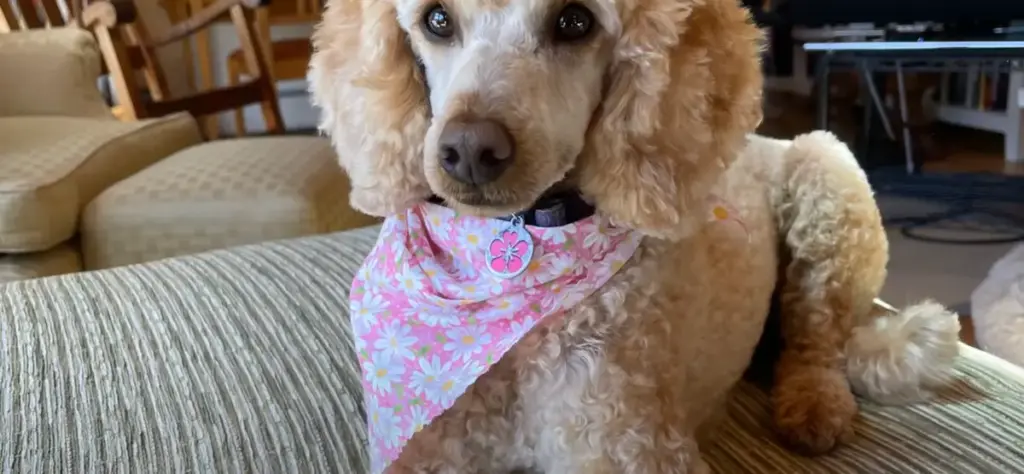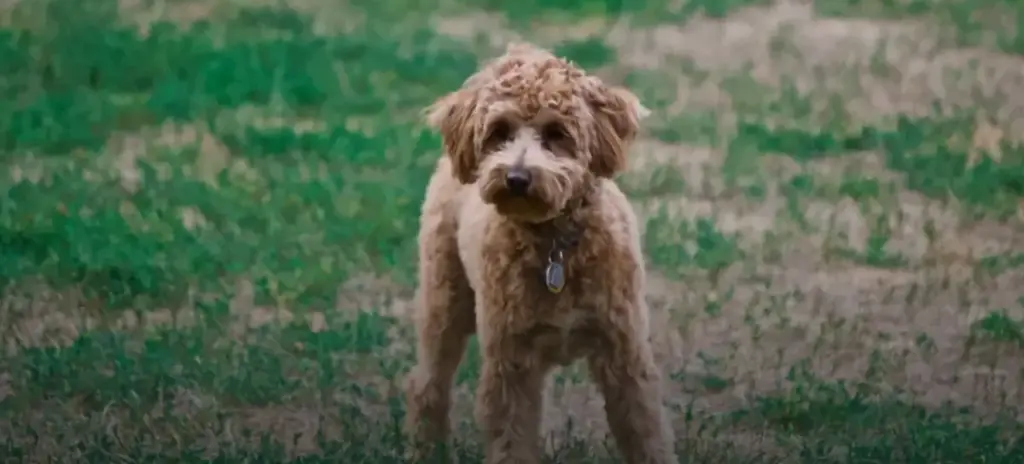Navigating the world of designer dogs can be as complex as putting together a thousand-piece puzzle, but you’re curious about the Chi-Poo, a blend as intriguing as its name suggests.
Comprising the sass of a Chihuahua and the intelligence of a Poodle, this hybrid dog has captured the hearts of many. You’re considering whether the Chi-Poo’s energetic demeanor and hypoallergenic coat might fit your lifestyle perfectly.
As you weigh the pros and cons, you’ll find a lot to consider, from temperament to health concerns, and every shred of knowledge can assist in making an informed decision.
But before you decide if you’re ready to welcome a Chi-Poo into your home, let’s explore the subtleties that make this breed as unique as the tapestry of traits it inherits from its diverse lineage.
- Noise Level
- Energy
- Sociability
- Trainability
- Care
- Health
Overall
Summary
Chi-Poos are moderately energetic and sociable dogs that are fairly trainable and require moderate care. They are generally healthy dogs with a moderate noise level.
Chi-Poo: Traits, Temperament, and Care Guide
The Chi-Poo, a blend of Chihuahua and Poodle traits, is an intelligent and affectionate companion that requires proper socialization, training, and healthcare to thrive.
As a designer breed, this Chihuahua Poodle mix’s temperament is friendly, eager to please, and benefits from positive reinforcement.
Regular vet visits mitigate potential health issues. Chi-Poos’ coat type varies; consistent grooming and exercise needs are paramount.
Ensure they’re socialized early for optimal integration with children.
Exploring the Characteristics
Having established a foundational understanding of the Chi-Poo’s behavior and care requirements, let’s examine the breed’s distinctive physical traits and inherent health considerations.
| Trait | Description | Relevance |
|---|---|---|
| Coat Types | Curly/wavy, short, combination | Influences grooming needs |
| Temperament | Affectionate, social, energetic | Reflects parent breeds’ natures |
| Health Problems | Dental, patellar luxation, allergies | Requires vigilant care |
| Size | Small | Ideal for various living spaces |
Chi-Poo dogs represent a harmonious blend of Chihuahua Poodle mixes, exhibiting a spectrum of coat colors and a designer dog appeal.
Chi-Poo: A Comprehensive Profile and Guide
As you explore the comprehensive profile and guide for the Chi-Poo, it’s essential to acknowledge the breed’s historical context, derived from the lineage of Chihuahuas and Poodles. You’ll find that Chi-Poos possess a blend of physical characteristics from their parent breeds, with a stature that’s small and balanced, and a coat that can be curly, short, or a mix of both.
Their temperament is amiable, and they’re amenable to training, but you must engage in early socialization to mitigate any potential behavioral issues.
Everything You Need to Know
Delving into Chi-Poos reveals a unique blend of Chihuahua and Poodle traits, offering prospective owners a comprehensive guide to understanding this engaging designer breed. Consider these key aspects:
- Health Problems:
- Prone to dental problems common in the Chihuahua breed.
- Awareness can prevent onset.
- Coat Color:
- Inherits a diverse palette from Poodle Chihuahua mixes.
- Requires regular grooming.
- Behavioral Traits:
- An intelligent dog with potential for separation anxiety.
- Needs structured companionship.
Discovering the Temperament
When exploring the temperament of the Chi-Poo, it’s essential to understand that this breed blends the friendly and intelligent nature of its Chihuahua and Poodle lineage.
Highly trainable and typically easy to train, a correctly socialized Chi-Poo can be a great family pet. However, they may exhibit a stubborn streak.
Early-age socialization ensures compatibility with young children, fostering a harmonious household environment.

Chi-Poo: Is It a Good Fit for Families?
When considering a Chi-Poo as a family pet, it’s crucial to evaluate its compatibility with both adults and children. Its small stature necessitates careful interaction to prevent injuries, especially with younger family members.
Chi-Poos thrive in environments where they receive adequate mental stimulation and physical exercise, aligning with the dynamic nature of family life.
Assessing Chi-Poo’s Compatibility with Families and Kids
Understanding the Chi-Poo’s compatibility with families and children is crucial, as these dogs are naturally friendly and tend to thrive in a family environment when properly socialized and trained. Here are key considerations:
- Chi-Poos are generally good with children, especially when early socialization occurs.
- The small size of these breed dogs necessitates supervision around young kids.
- An ethical breeding background ensures a well-adjusted Chihuahua and Poodle mix temperament.
Chi-Poo Adjustability Insights
Adapting effortlessly to various living environments, Chi-Poos are well-suited for apartment dwellers and homeowners due to their medium-sized build. This Chihuahua and Poodle mix exhibits notable adjustability, a hallmark of the small breed dog mix.
However, their propensity for health problems, particularly dental issues, necessitates attentive care. Avoid leaving your Chi-Poo alone for long to ensure their well-being.
Chi-Poo Training Essentials
You must begin Chi-Poo training early to cement desirable behaviors and mitigate potential disobedience.
Employ positive reinforcement techniques, leveraging treats and praise, to enhance their training and social acclimation.
Maintaining patience and consistency throughout the process ensures you integrate early socialization to avoid future behavioral issues.
Effective Training Strategies
To effectively train a Chi-Poo, start by incorporating positive reinforcement techniques such as offering treats, verbal praise, and additional rewards. These techniques capitalize on the dog’s natural intelligence and eagerness to please.
| Strategy | Benefit |
|---|---|
| Positive Reinforcement | Enhances learning using treats and praise |
| Early Socialization | Prevents behavior issues, strengthens bonds |
| Consistent Training | Ensures reliability in commands |
Employ these strategies for successful integration of your Chi-Poo into the family.
Exercise and Grooming Needs
Chi-Poos require daily walks and playtime to meet their moderate exercise needs regarding exercise and grooming. This should be complemented by regular brushing and occasional trimming to maintain their coat’s condition.
Whether your Chi-Poo has a long or short coat, it benefits from regular grooming. This helps distribute natural oils, critical for a healthy, low-shedding or moderate-shedding coat.
In addition to grooming, it is important to commit to daily exercise routines for your Chi-Poo. This will ensure their optimal well-being.

Health Considerations
As you consider a Chi-Poo’s health, be aware that they’re prone to certain conditions. You must monitor for common issues such as dental diseases, patellar luxation, and eye disorders, ensuring your pet receives appropriate veterinary care.
Common Health Issues and Lifespan
Chi-Poos often face several health challenges, including dental issues and patellar luxation. They typically live between 12 and 15 years when provided with optimal care.
These Chihuahua and Poodle mixes can inherit health problems like progressive retinal atrophy (PRA) and are susceptible to low blood sugar, especially as puppies. Allergies may also affect your Chi-Poo.
Regular veterinary check-ups are crucial to manage these common health issues effectively.
Is Chi-Poo the Right Pet for You?
Considering Chi-Poos’ intelligence and trainability, along with their friendly demeanor, they may be suitable companions for both individual owners and families with children.
Their small size and adaptable activity level align with varied lifestyles.
However, awareness of breed-specific rescue options is advised due to potential common health problems.
Chi-Poos’ coat type requires consistent grooming to maintain health and temperament.
Alternatives for Chi-Poo: Playful and Affectionate Small Mixed Breeds
Explore these breeds if you’re drawn to the Chi-Poo’s playfulness and affection, ideal for those who value cheerful and loving small mixed dogs.
| Similar Dogs | Short Description |
|---|---|
| Maltipoo | A Maltese and Poodle mix, known for its affectionate nature and charming looks. |
| Cavapoo | A mix of Cavalier King Charles Spaniel and Poodle, friendly and perfect for companionship. |
| Yorkipoo | A Yorkshire Terrier and Poodle mix, playful and great for families. |
| Pomapoo | A Pomeranian and Poodle mix, combining playfulness with charm. |
Conclusion
As you consider inviting a Chi-Poo into your life, it’s fascinating to note that nearly 1 in 3 mixed breed dogs in urban areas possess Poodle lineage, underscoring the popularity of Poodle mixes.
Your Chi-Poo will benefit from a structured routine, balanced nutrition, and regular check-ups to manage common health concerns.
Embrace the joys and challenges of Chi-Poo ownership by staying informed and proactive in your approach to their well-being. This will ensure harmonious companionship.
Frequently Asked Questions
What Is the Lifespan of a Chipoo Dog?
Your Chi-Poo’s health hinges on consistent veterinary care, including regular checkups and preventive medicine, to address age-related changes and genetic issues, ensuring companion longevity through tailored senior care, proper diet, and fulfilling exercise needs.
How Big Does a Chi-Poo Grow?
Expect your Chi-Poo to reach 7 to 15 inches tall, but size doesn’t predict their bold temperament! They need exercise, training, and proper diet to grow up healthy, well-socialized, and allergy-friendly.
What Are the Cons of a Chipoo?
Chi-Poos face cons like health concerns, grooming needs, and temperament issues. You’ll tackle training challenges, separation anxiety, and their barking tendency. Prioritize socialization and understand their exercise requirements, diet sensitivities, and climate adaptability.
What Does a Chi-Poo Look Like?
Chi-Poos display a blend of fur texture and color variations. You’ll notice their distinct ear shape, wavy tail style, and large eye size, varied coat patterns, endearing facial features, dainty paw appearance, and moderate snout length.
